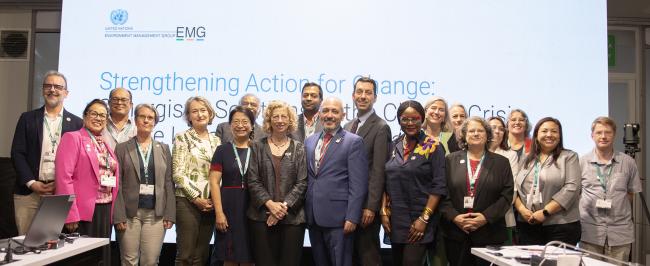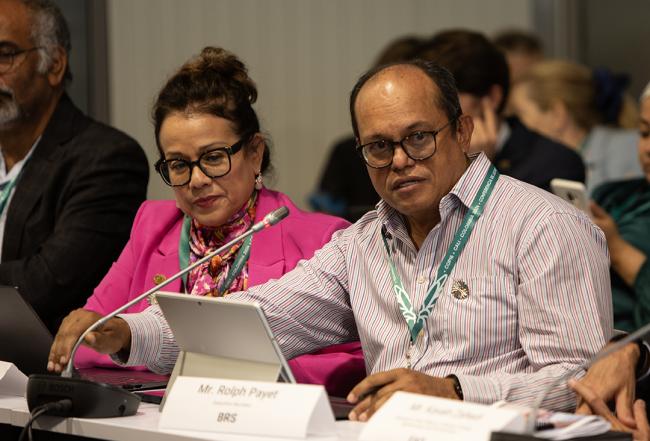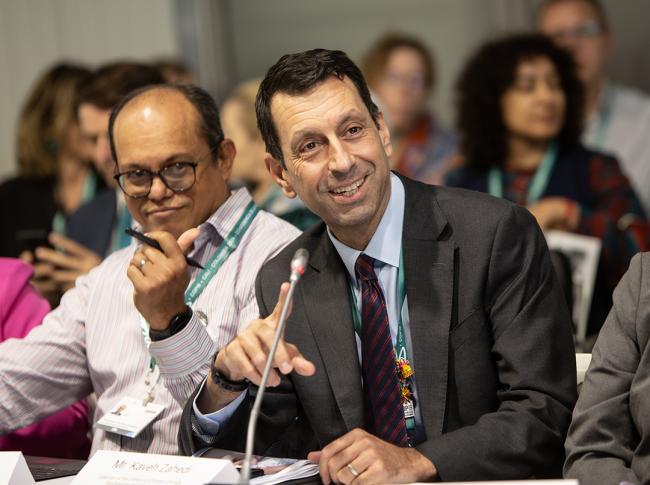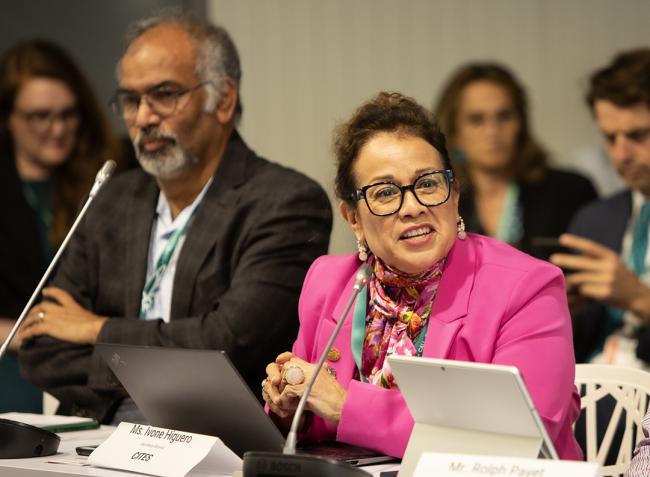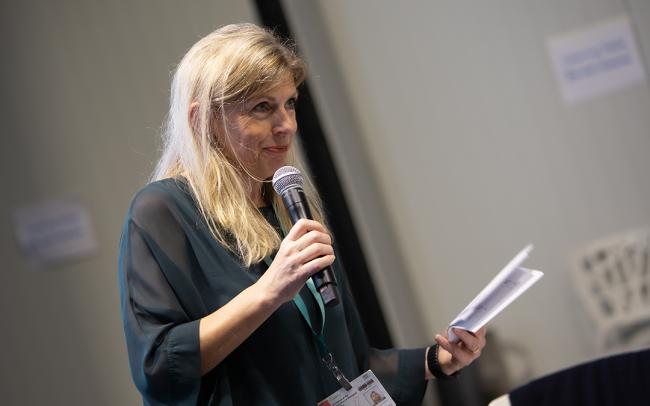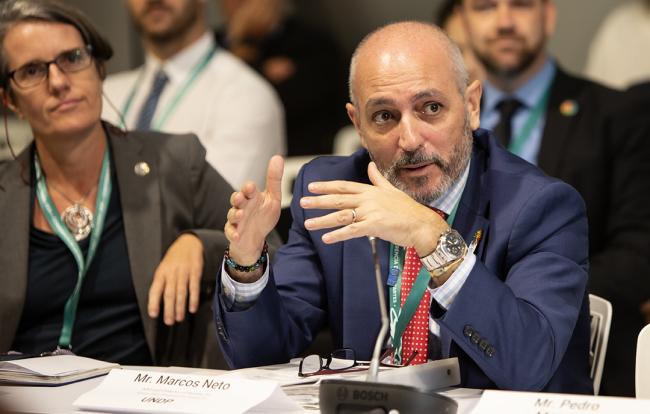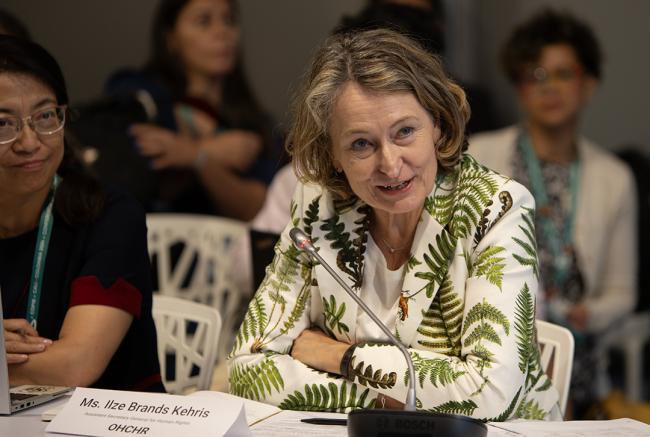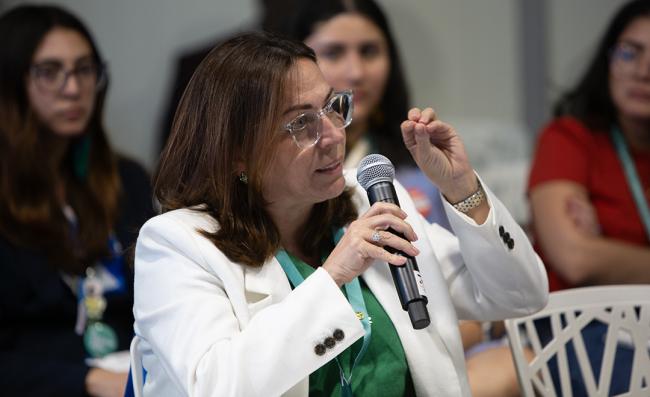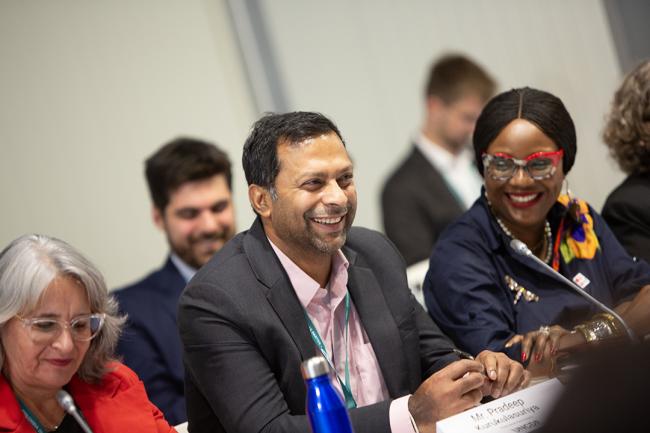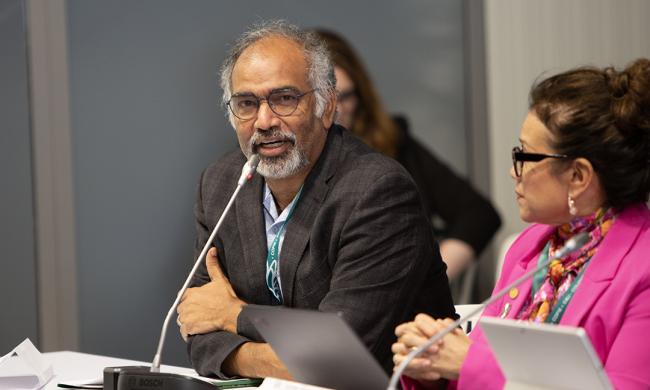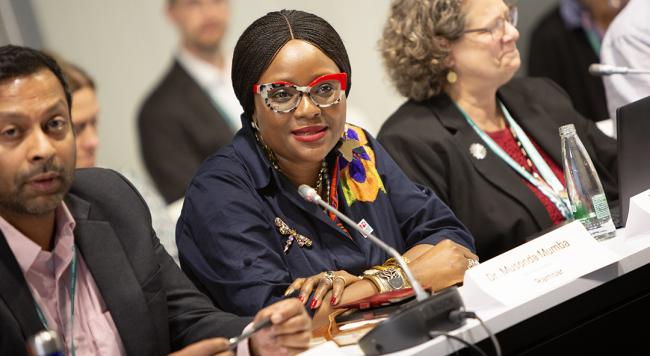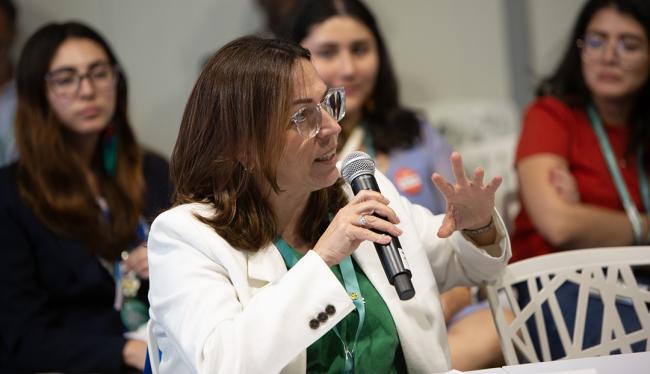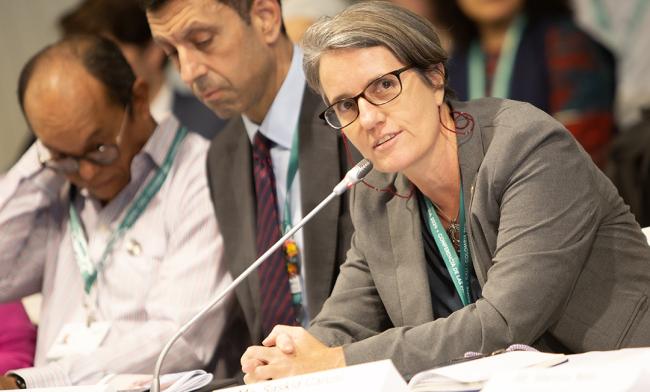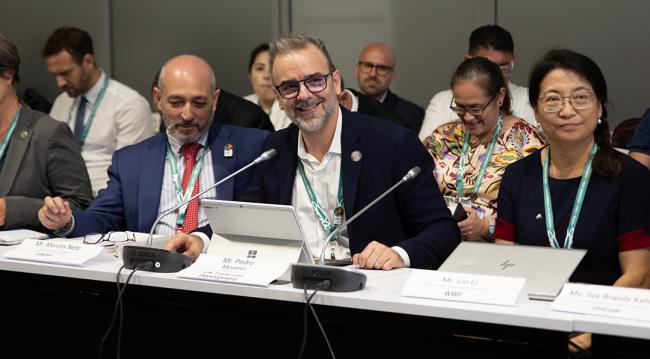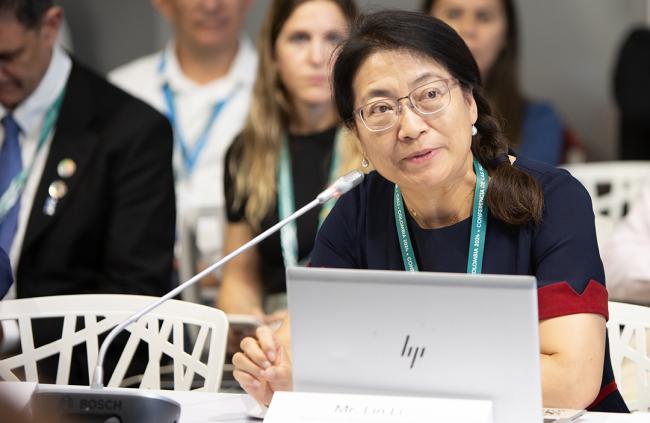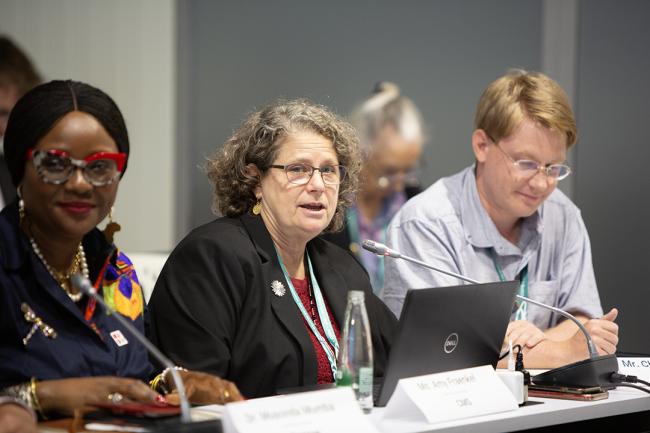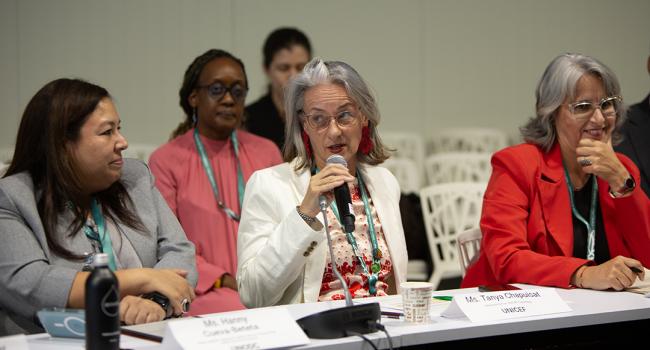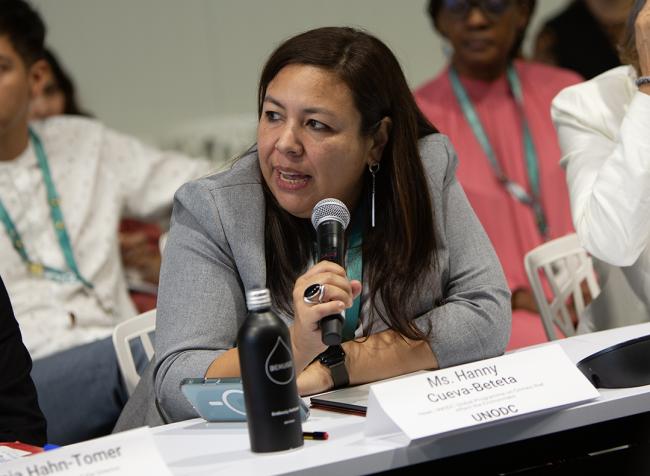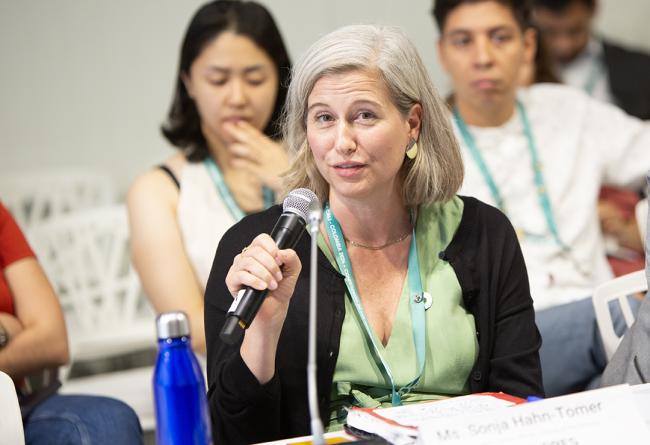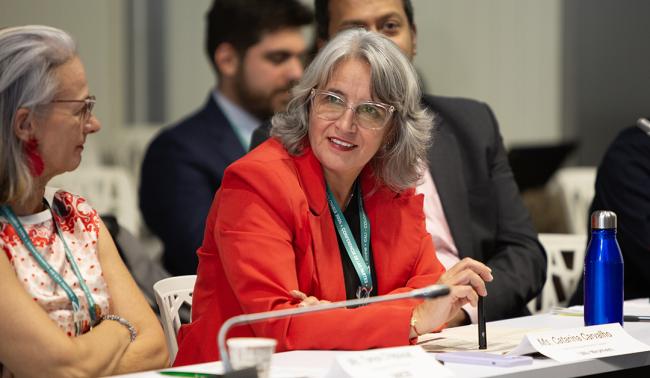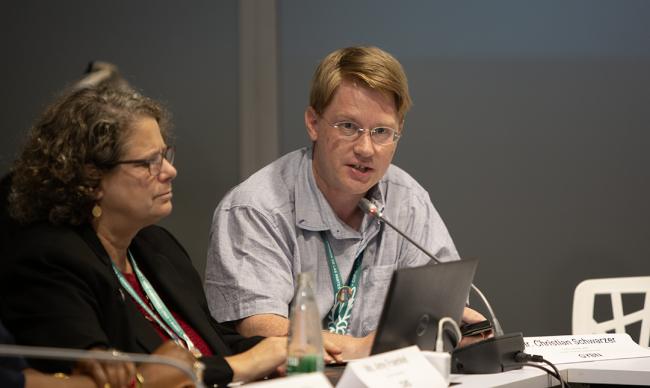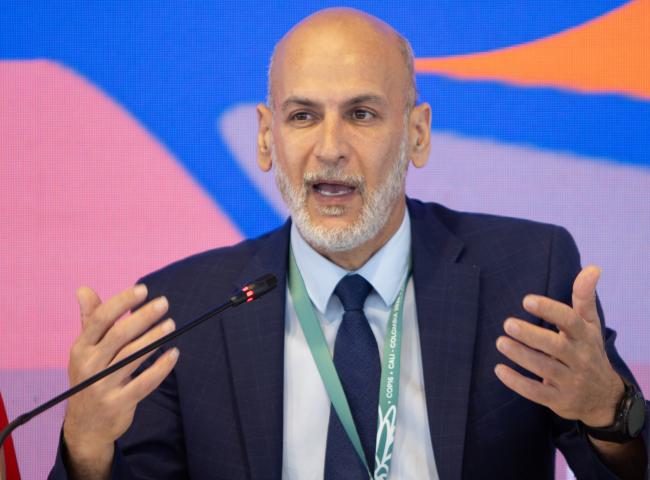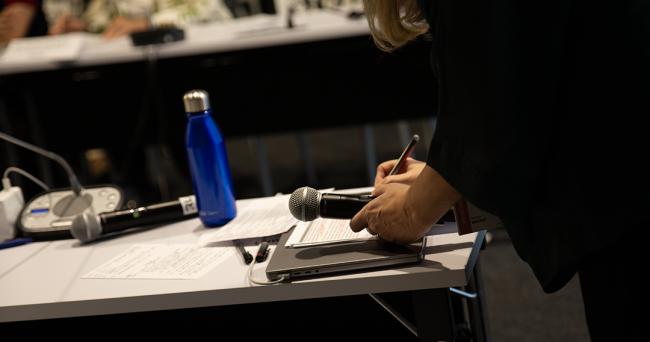About
The 16th meeting of the Conference of the Parties to the Convention on Biological Diversity (CBD COP 16) offered the first significant opportunity for Member States to take stock of progress made on the Kunming-Montreal Global Biodiversity Framework (GBF) since its adoption in 2022. This High-Level Roundtable, organized by the EMG Secretariat, brought together Heads and Senior Officials of UN Agencies and Secretariats to explore opportunities and pathways for strengthening the collective response to address the triple planetary crisis of climate, biodiversity, and pollution.
Walker facilitated the High-Level Roundtable, organized by the UN Environment Management Group (EMG) and structured as two panel discussions, with specific questions directed to each panel.
In opening remarks, Inger Andersen, Executive Director, UN Environment Programme (UNEP) and Chair of the EMG, emphasized the need to focus on the country level in order to deliver an integrated package of environmental solutions.
Noting the 2020 decision by the UN System Chief Executives Board (CEB) to adopt the UN Common Approach to Biodiversity, she called for better coordination, saying we are asking governments to take an all-of government, all-of-society approach and “if we can’t do it, then maybe we have no right to ask.”
Astrid Schomaker, CBD Executive Secretary, said the GBF and CBD monitoring and reporting system are mobilizing unprecedented amounts of people, including from business, finance, and media, in support of biodiversity and sustainable development. She said what matters is that we all see the crisis, and push forward together, including through a “whole-MEA” approach, which she called a true reform agenda for the UN.
Peace with Nature and Living in Harmony with Nature
Participants on the first panel shared how their agencies are contributing to the goal of “Peace with Nature.” Interventions focused on: supporting the right to a healthy environment; supporting implementation of global environmental relief agreements; driving the connection between climate, nature, and the Sustainable Development Goals (SDGs); making clear that reducing disaster risk helps protect nature, and that protecting nature helps reduce the risk of disasters; helping countries incorporate the sustainable use of biodiversity and agriculture into their plans; providing new guidance for Parties, including sustainability assessments and legal assistance on illegal wildlife trade; and promoting restoration as a key issue related to desertification.
In the context of the Rio Trio and synergies among the three Rio conventions, Muralee Thummarukudy, UN Convention to Combat Desertification (UNCCD), emphasized taking advantage of the digital transformation and addressing the asynchronous planning cycles.
On how the Convention on International Trade in Endangered Species of Wild Fauna and Flora (CITES) will collaborate with other MEAs to ensure synergies, Secretary-General Ivonne Higuero mentioned sharing the credit of doing the projects vs. thinking only about our own mandates.
On cooperation with the Basel, Rotterdam and Stockholm (BRS) Conventions with the CBD, Executive Secretary Rolph Payet emphasized recognizing how illegal drug trade affects finances and addressing silos at the national levels.
On better integrating biodiversity action across agrifood systems, Kaveh Zahedi, Food and Agriculture Organization of the UN (FAO), said mutually-reinforcing agendas have to be taken forward in a synchronized manner, pointing to updated National Biodiversity Strategies and Plans (NBSAPs).
On how a focus on prevention is helping with NBSAP implementation and disaster risk reduction (DRR), Saskia Carusi, UN Office for Disaster Risk Reduction, said a comprehensive risk management approach includes planning for DRR, and addressing climate change and biodiversity loss, in an integrated way, including through the use of nature-based solutions.
On countries accessing financial and capacity support, Marcos Neto, UN Development Programme (UNDP), stressed the need to synchronize requests for information between NDCs and NBSAPs and to include financial planning.
On how the private sector is supporting inclusive and rights-based approaches to protected areas, Lin Li, World Wide Fund for Nature (WWF), offered, as an example, the Heritage Colombia project, which has attracted USD 245 million in public and private funds to protect 32 million hectares of land.
On mainstreaming human rights into the heart of implementation, Ilze Brands Kehris, UN Office of the High Commissioner for Human Rights (OHCHR), said participation in decision making is central. She noted the broad range of human rights affected by biodiversity loss, especially environmental defenders and Indigenous Peoples rights defenders.
On actions related to biodiversity finance, the private sector, and mobilizing funding to support NBSAP implementation, Pedro Manuel Moreno, UN Trade and Development (UNCTAD), noted that many people live in countries that spend more on debt service than on health or education. He stressed the need for a comprehensive approach to debt relief, including meaningful debt restructuring.
Walker invited panelists to provide insights on how collaboration can help generate more funds or deliver them to where they need to go. Key points included: deploying guarantees and changing the way credit rating risk is calculated to attract more investment; addressing pollution issues while also addressing climate issues; increased leveraging of partner agency portfolios; repurposing existing investments; and creating partnerships and consortia among diverse partners.
During the second panel, speakers also shared efforts related to the vision of “Peace with Nature.”
Speakers mentioned: scaling up efforts to address illegal and unsustainable taking of migratory species and lifting up the Global Partnership on Ecological Connectivity (GPEC); putting wetlands at the center of our lifelines; working to unlock private sector finance; accelerating efforts to protect human and environmental defenders; engagement with and leadership of women on NBSAPs; a climate action plan to guide communities, governments, and global leaders to prioritize children’s needs; addressing crimes against the environment; focusing on the research nexus and building capacities and knowledge sharing platforms; and working on peace, food systems, and social protection.
Panelists then responded to specific prompts from the facilitator.
On promoting a strong monitoring framework for the GBF and cooperation, Amy Fraenkel, Executive Secretary, Convention on the Conservation of Migratory Species of Wild Animals (CMS), highlighted the GPEC for leveraging actions and resources. She noted a knowledge gap on critical habitat for breeding and feeding areas, which affects investment banks and infrastructure development.
On how the Ramsar Convention on Wetlands is developing and implementing NBSAPs and national wetland policies in a consistent, mutually-supporting way, Secretary-General Musonda Mumba described working with countries on wetland inventories. She noted Costa Rica’s National Blue Carbon Strategy that integrates different UN frameworks, including on climate, biodiversity, and wetlands.
On scaling up investment, Pradeep Kurukulasuriya, Executive Secretary, UN Capital Development Fund, emphasized de-risking capital in order to reach Indigenous Peoples and communities.
On providing direct access to financial resources for women, youth, Indigenous Peoples, and local communities, Catarina Carvalho, UN Entity for Gender Equality and the Empowerment of Women (UN Women), noted that UN Secretary-General António Guterres said we need to put women and girls at the center, and announced a forthcoming paper on synergies between the three Rio Conventions.
Addressing the climate crisis as a child rights crisis, Tanya Chapuisat, UN Children’s Fund (UNICEF), said one in every four child deaths is an environmental-related death. She noted work on innovative, gendered, age-responsive financial tools for child health and wellbeing in environmental policy, investment, and interventions.
On collaboration between law enforcement and crime prevention, and environmental actors on the ground, Hanny Cueva-Beteta, UN Office on Drugs and Crime, highlighted an integrative approach that looks at preventing and addressing crimes that affect the environment, and connecting with Indigenous and local communities—the actors who know what is happening on the ground.
On collaborative research and education related to the technical/scientific solutions required to implement the GBF, Sonja Hahn-Tomer, UN University Institute for Integrated Management of Material Fluxes and of Resources (UNU-FLORES), mentioned the integrative resource nexus approach, sustainable financing, and collaborative partnerships, including one on revitalization of a post-coal mining area.
On how the youth movement is promoting the incorporation of a whole-of-society approach in the CBD process, David Schwarzer, Global Youth Biodiversity Network (GYBN), described a youth summit in Japan that involved the CBD, a UN agency, and local and national governments. On the one best way for UN entities to better support and amplify youth voices, he said young people are being criminally underfunded, compared to resources for other sectors, including shortfalls in support for attending COP16, and called for real, genuine equal partnerships.
Regarding efforts to implement the GBF and what is needed from the UN system, Mireia Villar Forner, UN Resident Coordinator in Colombia, said “it’s not a silo problem, it’s an incentive problem,” and we need to “think downward,” to help get the resources and knowledge where they are most needed.
Walker invited participants to reflect on what more can be done to provide support at the local level. Recommendations included: using public money to capitalize on funding from the private sector, and promoting financial de-risking; addressing access to water and nutrition; and connecting with local authorities, local communities, women and girls, and the children and youth who are the most affected.
Participants suggestions for the top three things that should be taken forward to the High-level Ministerial meetings included: spending more time interacting; focusing on carbon; increasing political will; including the voices of young people; anchoring environmental action in human rights; using a common country analysis; being honest about the challenges of mobilization; transforming the energy, finance, and food systems; thinking outside the box; using data and evidence in a coherent way; having a commitment to reach out to each other; and considering monitoring whether the EMG is really having an impact.
In a closing, participants were asked where they would choose to spend a year working somewhere else if given the choice. Some of the responses included: UNODC to tackle crimes and drugs, which contribute to biodiversity loss; working in agriculture on a farm; and being the Chair to make sure we all come together.
Organizer:
UN Environment Management Group (EMG)
Contacts:
emg@un.org
For more information:
https://www.cbd.int/conferences/2024/cop-16-hls
To receive free coverage of global environmental events delivered to your inbox, subscribe to the ENB Update newsletter.
All ENB photos are free to use with attribution. For the 2024 UN Biodiversity Conference, please use: Photo by IISD/ENB | Angeles Estrada Vigil
